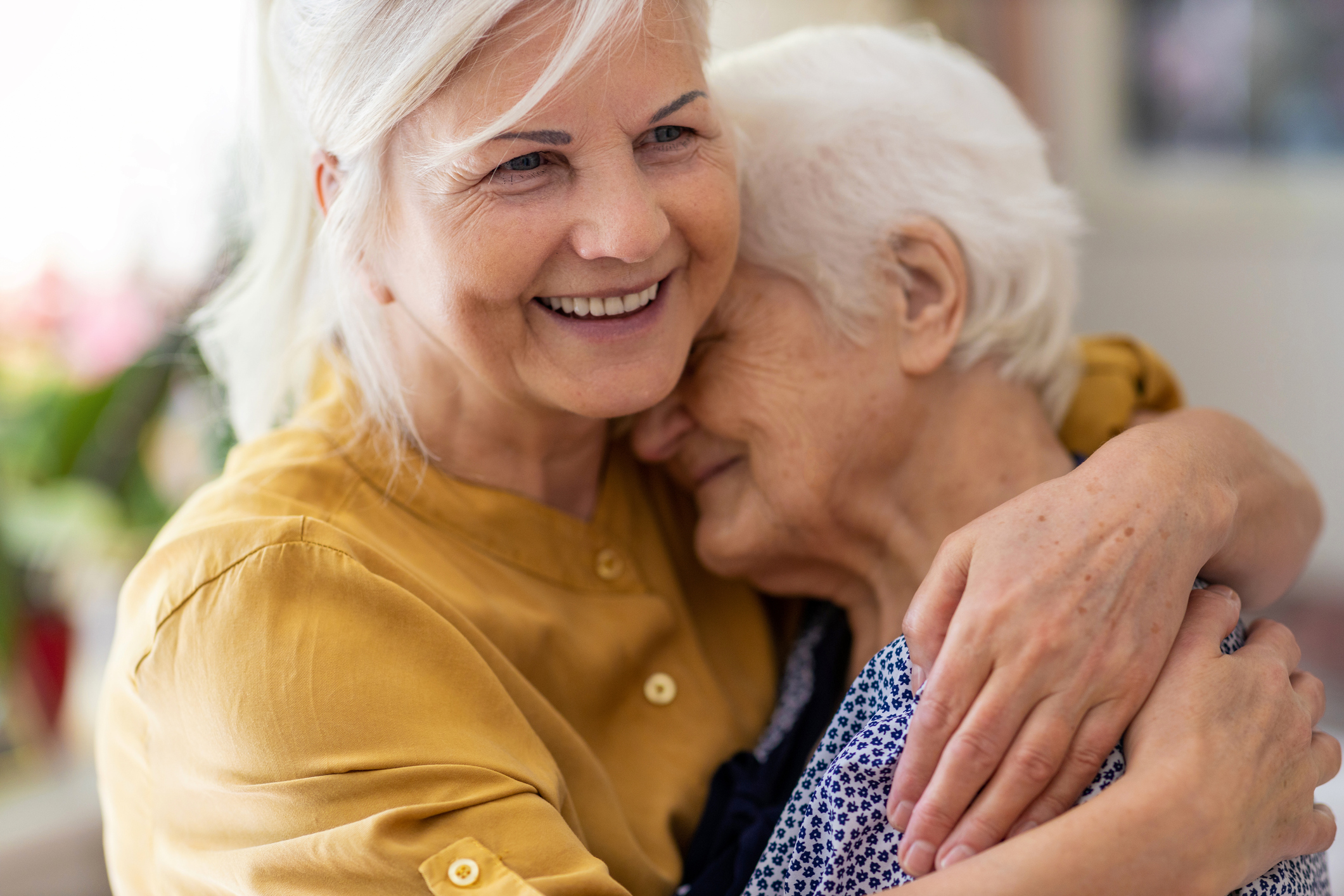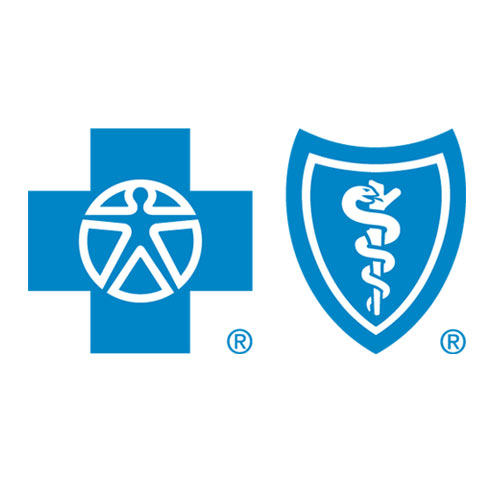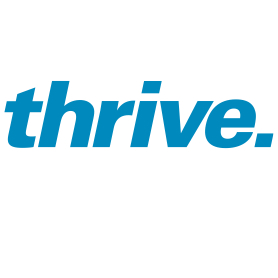Caregiver burnout is real: Here's how to recognize it and what to do
July 9, 2021A survey recently conducted by the Blue Cross and Blue Shield of Minnesota Caregivers Network found that associates who are also caregivers were overwhelmingly experiencing burnout.
 “The last year has been particularly challenging as caregivers continue to navigate the changing demands of the pandemic and responsibilities both at work and at home,” said Jackie Edison, co-chair of the Caregivers Network and principal program manager in the STARS Risk and Quality Center of Excellence at Blue Cross.
“The last year has been particularly challenging as caregivers continue to navigate the changing demands of the pandemic and responsibilities both at work and at home,” said Jackie Edison, co-chair of the Caregivers Network and principal program manager in the STARS Risk and Quality Center of Excellence at Blue Cross.
Jackie’s knowledge and passion for caregivers spans both personal and professional as she managed the pilot phase of an innovative program that supports family caregivers of Blue Cross members with dementia. Jackie recently presented the program’s success at the national Blue Cross and Blue Shield Association Virtual Summit where she shared data illustrating the program’s positive impact on health outcomes for both members and their caregivers. Read more: Technology as a helping hand for caregivers of seniors with dementia.

“I’ve seen the impact of caregiver support through my work with Medicaid and Medicare members and I’ve also experienced the stress of caregiving. So, it’s important to me to build community among our associates to support each other in our caregiving roles,” Jackie says.
Based on the associate survey that identified increased levels of burnout, the Caregivers Network, in partnership with the Compass Associate Resource Group, held a panel discussion to help identify burnout and stress and presented resources to help manage and prevent it. Their goal? To let associates know that while their caregiving journeys are unique, they are not alone.
Panelists included:
- Russ Morfitt, chief psychologist and co-founder of Learn to Live
- Lori Mihalich-Levin, CEO and founder of Mindful Return
- Heidi Kent-Mack, benefits manager at Blue Cross
- JoAnna Gallmon-Young, diversity and inclusion program manager at Blue Cross
All different types of caregivers joined in the virtual event– those who care for children, grandchildren or other family members, spouses or partners, as well as aging parents or grandparents and more.
The importance of caregiving
Russ Morfitt
“Caregiving is a vitally important and often unappreciated role that many of us serve in during various points in our lives,” Dr. Russ said.
As the parent of a daughter with a medical condition that requires an extra level of care and the son of a mother in her 80s with health issues, Dr. Russ plays several different caregiver roles.
Lori Mihalich-Levin
Lori is primarily the caregiver for her two elementary school-aged sons. “We spent 13 long, difficult months in our house together, the four of us, so we’re still coming out of that experience. It was long and dark and hard,” she said.
One of her sons struggled with a mental health issue and the other was too young to fully, effectively participate in distance learning. “I have super ninja skills because I am a caregiver,” she said. “I apply those to my work. I apply them at home. I really emphasize [those skills] because I don’t think they get enough attention.”
Heidi Kent-Mack
Heidi is the mother of and caregiver to a three-year-old and says it is one of the most rewarding jobs a person can have but admits it can also be completely exhausting.
“Caregiving is the ultimate roller coaster of highs and lows,” she said.
JoAnna Gallmon-Young
JoAnna has multiple caregiving roles, including caring for her three-year-old son with another child on the way, her retired parents and helping care for her grandmother.
“Caregiving, to me, has changed throughout the years. It’s an ever-flowing, very fluid term,” she said.
Strategies for coping with burnout
Each panelist shared that they have faced stress and burnout, particularly during the height of the COVID-19 pandemic and related lockdowns. They also shared strategies that have helped them cope.
“There is significant research done about burnout. It’s a chronic stress syndrome that tends to be related to the tasks, functions and roles we play,” Dr. Russ explained.
“Stress is your body perceiving a threat, so physically your body is ready and a number of things are happening internally. There is a certain level of fight or flight that kicks in. It can be really draining when it goes on at a high level.”
Some of the signs of caregiver burnout and the stress, depression and anxiety related to it include:
- Feelings of inadequacy or incompetency
- Abnormal levels of fatigue
- Losing motivation
- Digestive system issues
- Not sleeping or sleeping too much
- Not eating or eating too much
- Feeling levels of stress and anxiety are climbing over a prolonged period of time
“These physical markers can be the things that tell us it’s time to take action. If you’re at a level of hopelessness, you should seek professional help,” Dr. Russ said.

The importance of friend and family support
Lori explained that she felt caregiver burnout the first year she had two small children at home and during COVID-19 lockdowns. She and her husband sought professional help from a therapist and had their son work with a therapist as well. However, it was a friend reaching out that she said helped her the most.
“I was speaking to my friend about some of the troubles my son was going through and she said to me, ‘You will start taking one day off per month. And you will email or text me the date you are taking off to go be by yourself and have something where you’re not caretaking or worried about your husband, you’re out of your house. And on that day, I will text you and make sure you’re doing that.’ That was in February and every month since my dear friend has kept track of me and made sure that I am taking a mental health day.”
Lori and her husband also agreed to three-hour blocks of alone time on the weekends. He has three hours to himself on Saturday to do whatever he wanted and she has three hours on Sunday. Her activities included wandering the neighborhood, reading or taking a nap. She reported that the alone time has been enormously helpful.
“Teeny tiny micro self-care actually really helps,” she said. “We have this idea that we need a whole day off, but I don’t think that’s true.”
Taking care of yourself
Heidi said she often feels there’s not enough time in the day to be successful in her job, care for the people she loves and also take time for herself. When she starts to feel burned out, she feels “analysis paralysis” and can’t truly get anything accomplished. “When I catch that, instead of beating myself up more, I tell myself to pause and take a minute. Then I’ll do a task I know I can complete, like doing the dishes or folding towels. Once I do that, I feel like I conquered a part of the world.”
Heidi and her family also went camping and made a no technology rule. She said she was shocked at how much better she felt at the end of their trip.

Recognizing and addressing anxiety
JoAnna explained she had severe postpartum anxiety when she brought her son home from the hospital three years ago.
“In my mind, I was doing everything I could to ensure everyone else was good, but I forgot that the person I really needed to focus on was me,” she said. “That was the first moment I hit the very rock bottom of burnout saying, ‘I can’t function like this anymore, I’m causing myself more stress and it’s overflowing onto everyone else in my life.”
After JoAnna and her husband learned they were pregnant with their second child, she said her stress levels peaked again.
“It was in the middle of COVID and there’s civil unrest and all of the sudden there was this realization that I was a Black woman raising two Black kids, especially Black boys,” she said.
“Handling those moments was a matter of being honest with myself. I would love to take off, but work needs to be done. I would love to take a moment, but I need to ensure my son is taken care of. There are all these things that layers on top of each other, then you realize you’re on empty,” she explained. “I realize I need to pause and make sure I’m okay― that JoAnna is okay; that Jaxson’s mother is okay; that my husband’s wife is okay. Then fill my tank back up. I need to ensure I’m the best caregiver I can be and that I don’t burn out.”
Using behavioral activation techniques
Dr. Russ recommends behavioral activation in response to caregiver burnout, including low mood and depression.
“Heidi mentioned folding towels, that is a kind of behavioral activation where you get a sense of accomplishing things. I’m already accomplishing little things and maybe I want to accomplish bigger things or need to be more engaged in doing things that are fun or used to be fun,” he said of this steppingstone approach.
“To do that, we typically have to give ourselves permission to step away from these responsibilities we have. If we’re going to prosper through this time, we need to give ourselves permission to engage, to recharge our batteries through activation.”
He suggests working with others, family members, friends and even professionals, when needed, to find ways― even small ways― to help. He also said that caregivers should focus on accepting help from others.
Reclaiming time and resetting expectations
Heidi said one small way she started reclaiming some time is to use drive-up grocery and retail pick up instead of shopping in stores.
“Before COVID, many people just had things arranged,” Dr. Russ said. “There were clear expectations and a way things worked. There was school and childcare and all those things were predictable. Now the deck has been reshuffled for so many of us. There are a lot of complications and I think this is the time we all need to be more sensitive to one another’s limitations. Things are just different now.”
Resources for caregivers
There are multiple resources for caregivers on bluecrossmn.com including:
- Wellbeing resources, including more information and tips on how to manage stress
- An extensive list of caregiver resources
In addition, visit Caregiver Corner, a resource from Blue Cross, for further resources and support.
The Caregiver’s Network is a subcommittee of the Women’s Associate Resource at Blue Cross. The Women’s Network is focused on making Blue Cross a best place to work for women associates by providing opportunities to network, grow, learn, create positive change and provide thought leadership to the company. Through forums with female leaders, as well as other activities and events, they explore personal and professional development, and how we can remove barriers and glass ceilings to create a more gender-balanced workplace and world.
The Compass Associate Resource Group exists to advance Blue Cross’ commitment to diversity, equity and inclusion by raising awareness, increasing understanding, encouraging acceptance and eliminating stigma associated with mental health or substance use challenges.





